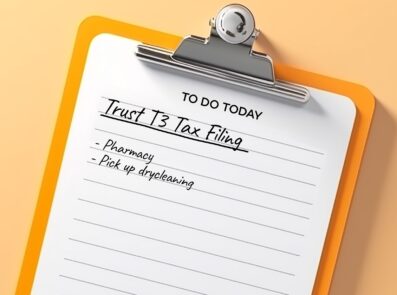The new Canada Emergency Rent Subsidy (CERS) program for businesses, non-profits and charities that are facing economic challenges due to COVID-19 received Royal Ascent on November 19th, 2020. It is expected applications for CERS will open as early as Monday, November 23rd, 2020.
CERS replaces the Canada Emergency Commercial Rent Assistance (CECRA) program and will provide a rent subsidy retroactively to September 27th, 2020 and continue until June 30th, 2021. The maximum base rate subsidy available is 65% for organizations that have experienced a drop in revenue of 70% or more. Organizations with a drop in revenue of 50% will receive a base rate subsidy of at least 40%. Additional Lockdown Support will be offered when a shut down or severe restriction on regular activity is ordered by public health.
Unlike CECRA, tenants will be able to apply directly for the subsidy without the participation of their landlord. Details of the available subsidy and the eligibility requirements for the first 12 weeks of the program are set out below. We will share details on the qualifying criteria and eligible subsidies for the periods occurring after December 19th as soon as they become available.
Eligible Applicants
The eligibility requirements for CERS are very similar to the requirement for Canada Emergency Wage Subsidy (CEWS). Applications can be submitted by:
- individuals (sole proprietors)
- taxable corporations and trusts
- non-profit organizations
- registered charities.
Eligible applicants must file an application in prescribed form on or before the later of January 30th, 2021 and 180 days after the end of the qualifying period.
Eligible Expenses
Eligible expenses for CERS include:
- commercial rent
- property tax (including school taxes and municipal taxes)
- property insurance
- interest on commercial mortgages (subject to limits) for a qualifying property, less any subleasing revenues.
Sales tax from these expenses are not eligible for the subsidy.
Eligible expenses would include amounts payable to arms-length entities based on signed contracts that were entered into before October 9th, 2020. Mortgage interest expenses in respect of a property primarily used to earn, directly or indirectly, rental income from arms-length entities, such as AirBnB rentals, are not eligible.
Applications for CERS can be made for each business location in Canada and applications must be based on revenue per location. Expenses for each qualifying period are capped at $75,000 per location and there is maximum overall subsidy of $300,000 shared amongst affiliated entities per reporting period.
Calculating Your Decline in Revenue
The amount of each applicant’s CERS subsidy will be based on the organization’s decline in revenue for the reporting period. Eligibility for CERS is typically determined by the change in revenue, based on normal operations and excluding capital items, compared to the same calendar month of the previous year. It should be noted that the applicant also has the option of using the preceding period as compared to the same period in the prior year, if more advantageous.
The alternative option is to compare revenue decline with the average revenue from January and February 2020. Whichever revenue comparison option is used for the first reporting period (period 8) must be used for the subsequent two periods (periods 9 and 10 as set out below) of the initial CERS program.
The reporting and revenue comparison periods for the first three period of CERS are set out below. (Note: periods 1 thought 7 were covered by CECRA).
| Qualifying Period | General Approach | Alternative Approach | |
| Period 8 | September 27 to October 24, 2020 | October 2020 over October 2019 or September 2020 over September 2019 |
October 2020 or September 2020 over average of January and February 2020 |
| Period 9 | October 25 to November 21, 2020 | November 2020 over November 2019 or October 2020 over October 2019 |
November 2020 or October 2020 over average of January and February 2020
|
| Period 10 | November 22 to December 19, 2020 | December 2020 over December 2019 or November 2020 over November 2019 |
December 2020 or November 2020 over average of January and February 2020
|
Calculating Your Subsidy
The eligibility criteria for a business applying for CERS will be similar to the assessment used to determine (CEWS) eligibility for similar periods.
The table below provides further detail on the sliding scale used to determine the subsidy for the first 12 weeks of the program.
| Revenue Decline | Base Rate Subsidy |
| 70% and over | 65% |
| 50% to 69% | 40% + (revenue drop – 50%) x 1.25 (e.g., 40% + (60% revenue drop – 50%) x 1.25 = 52.5% subsidy rate) |
| 1% to 49% | Revenue drop x 0.8 (e.g., 25% revenue drop x 0.8 = 20% subsidy rate) |
Lockdown Support
In addition to the CERS, the government has also introduced Lockdown Support for businesses, non-profits and charities that are ordered by public health to close their doors. Lockdown Support will provide affected organizations with an additional 25% on top of their CERS benefit.
The benefit will also be available to organizations that see at least a 25% drop in revenue at a business location due to a public health order that significantly limits their activity. To be eligible for the Lockdown Support, the public health order must be in place for a minimum of seven days.
Qualifying organizations seeing a 70% drop in revenue may be eligible for a total subsidy of up to 90% of their eligible expenses during the time they are closed, or have their operations severely restricted due to a public health order. If the public health order is only in place for a portion of the reporting period, the benefit will be pro-rated.
The Department of Finance has provided the examples below of public health orders that significantly limit business activity are:
- Restrictions on indoor dining: a restaurant that normally earns approximately 25 per cent or more of its revenues in connection with indoor dining could qualify due to its dining room being shut down even if it shifts its activities to take-out orders to make up some of the lost revenues from indoor dining.
- Closure of bars: a bar that is ordered to close down due to a regional public health restriction, and, anticipating low demand for take-out, does not continue operating, could qualify.
- Closure of fitness centres: a fitness center providing group fitness classes that is ordered to close down could qualify, even if, for instance, it moves to online instruction.
- Closure of retail stores: a retail store that is ordered to close down its location in a shopping mall, but that continues to operate providing online sales and curbside pick-up, could qualify so long as its in-store sales normally accounted for at least approximately 25 per cent of its revenues.
- Restrictions on types of personal services: an esthetics studio that earned most of its pre-pandemic revenues from services that cannot be performed while wearing a mask and can no longer be provided due to a public health restriction, could qualify.
The Department of Finance’s examples of public health restrictions that would not lead to Lockdown Support eligibility are:
- Reduction in business hours: a bar that is subject to a restriction requiring bars in a region to shut down by 10:00 pm each day would not qualify, as their activities would not be required to cease for a period of at least one week.
- Requirements for physical distancing: a restaurant that earns most of its revenues in connection with indoor dining would not qualify due to a public health restriction limiting patrons to six persons per table, as it could continue to carry on its indoor dining activities.
- Restrictions on travel: a bed and breakfast that sees a decrease in the number of clients due to travel restrictions would not qualify as it can continue to operate, and there is no order to cease its activities.
- Reduction in the number of clients at any one time: a movie theater that is required to limit the number of clients would not qualify, as it would not be required to cease any of its activities.
- Violation of a public health order: a factory that is required to close down due to violating a public health restriction would not qualify because the shut-down resulted from a contravention of public health orders.
The Lockdown Support is being offered retroactively to September 27th, 2020 and will run until June 30th, 2021. For the first three reporting periods, the Lockdown Support program will cover the same expenses as CERS. Each location’s revenue decline and total subsidy will be calculated using the same tables outlined above. Like CERS, expenses for each qualifying period are capped at $75,000 per location and there is maximum overall subsidy of $300,000 shared amongst affiliated entities per reporting period. We will share details on the qualifying criteria and eligible subsidies for periods 11 onwards when they become available.






